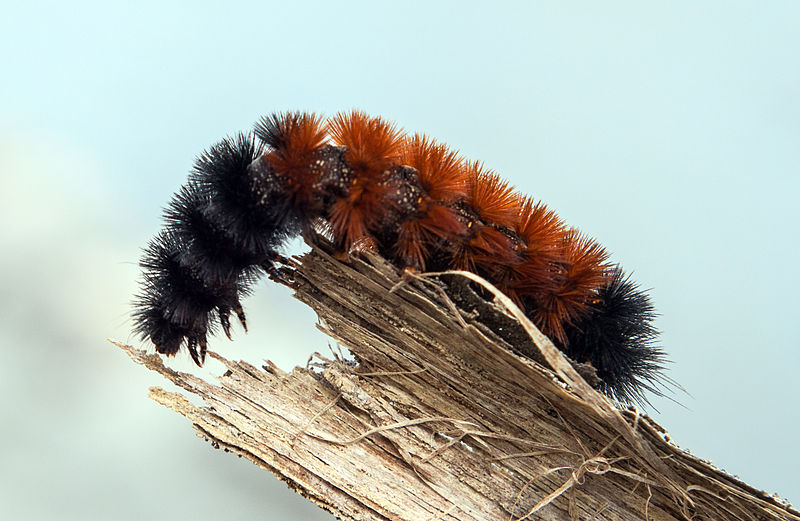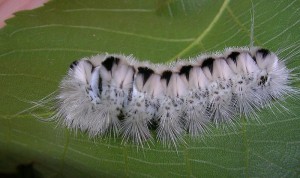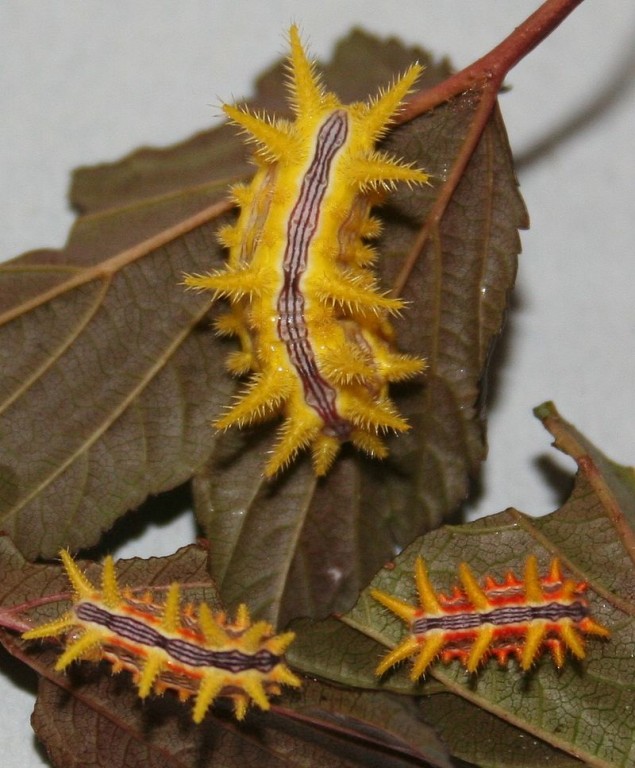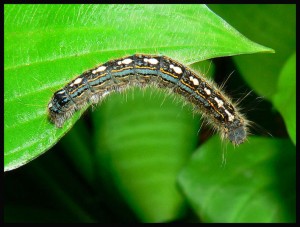“Calipitters”: sweet, gentle, fuzzy – and venomous

Woolybear caterpillar. Photo: Micha L. Rieser, Creative Commons, some rights reserved
When I was a kid I was fascinated by caterpillars, but had trouble with the word. To me, the sweet little woolly-bear traversing my hand was a “calipitter.” It was only years later I learned that a calipitter is an instrument used to measure the diameter of a caterpillar to the nearest micron.
Caterpillars continue to interest me, although I no longer find them universally cute. Imagine the letdown and loss of innocence following the discovery that some of these fuzzy, fascinating, gentle creatures that tickled their way across my hand were venomous. This revelation was akin to finding out Bambi was a dangerous carnivore, which in fact is a fear that haunts me to this day.
It seems a further injustice that many of the so-called “stinging-hair caterpillars” are among the cutest and most colorful out there. But at least they are not aggressive the way yellow jackets can be. They are strictly defensive, the defense being hollow hairs connected to poison glands that secrete toxins. The chemical cocktail is species-specific, and often involves serotonin, histamine, formic acid and various amino acids.
The hairs inject their charge only when the critter is roughly handled. Or falls down your shirt, or gets in your sleeping bag, or is pressed against one’s skin in some other way. Unfortunately their stings cause a painful rash, which may persist for a week or more. Some people have more severe reactions, requiring medical treatment.

Hickory tussuck caterpillar. Photo: The Tooth Fairy, Creative Commons, some rights reserved
You’d think poisonous caterpillars would be from exotic locales, but to my knowledge all in our region are native species. One large and diverse group is the tussock moth clan. These caterpillars are about as terrifying as teddy bears. Two examples are the hickory (Lophocampa caryae) and white-marked (Orgyia leucostigma) tussock moths, common locally. I’ve had many encounters with these and others of their kin over the years.
Hickory tussock caterpillars are mostly white, peppered with a smattering of longer black “whiskers.” White-marked tussock larvae look like they’re fresh out of clown school, with a yellow-and-black striped pattern, bright red heads, a pair of super-long black appendages as a headdress, a row of lateral white hairs on each side, and four bright yellow (sometimes white) tufts behind their heads like a row of smoke stacks.
The stubby brown hag moth caterpillar (Phobetron pithecium) definitely does not look like a caterpillar. It could easily be mistaken for a dust-bunny or ball of lint. Sometimes known as the monkey slug, this oddity has eight furry, arm-like appendages, and should get a prize for its resemblance to a plush toy. If you come across the monkey slug, do resist the impulse to cuddle it.

Stinging rose caterpillar. Photo: Megan McCarty, Creative Commons, some rights reserved
Similar to the way poison-arrow frogs dress flamboyantly to advertise they are a poor choice as prey, some toxic caterpillars have even brighter paint jobs than the tussock moths. For example, the brilliantly attired stinging rose (Parasa indetermina) and saddleback (Acharia stimulea) caterpillars look like some practical joker has set out miniature party piñatas. Eye-catching and bristling with barbs, no one is going to mistake them for a plush toy.
Fortunately, many poisonous caterpillars look the part. The Io moth (Automeris io), a huge moth bearing a striking eye-spot shape on each wing, starts out as a neon-green (first instar is red) caterpillar studded with scary-looking barbs. Going further afield, the giant silkworm moth caterpillar (Lonomia oblique) of southern South America has been responsible for as many as 500 human deaths.
It is good to note that just about every fuzzy caterpillar can induce asthma because the hairs are both very fragile and readily become airborne. Pests such as the eastern and forest tent caterpillars, and gypsy moths can occur in such large numbers that many cases of asthma often result, especially in children. Even the beloved woolly bears (many species of the family Arctiinae) can trigger attacks in some people.

Forest tent caterpillar. Photo: Greg Hume, Creative Commons, some rights reserved
The best thing to do in case of a sting is to use Scotch or packing tape on the skin to pull out any embedded hairs. Wash the affected area, and isolate any clothing you suspect may harbor stray hairs. Monitor the affected person for a few hours for signs of serious reactions, and otherwise treat the rash the way you would any sting. Use calamine lotion, antihistamines, or hydrocortisone as directed by your doctor.
Hopefully, having a few bad apples around will not keep you from appreciating caterpillars. Even the ugliest ones grow up to be moths and butterflies, many of which are beautiful, and all of which are important pollinators. Stay away from the ones described above, and be sure to take along your callipitter.
Paul Hetzler is a horticulture and natural resources educator with Cornell Cooperative Extension of St. Lawrence County.







